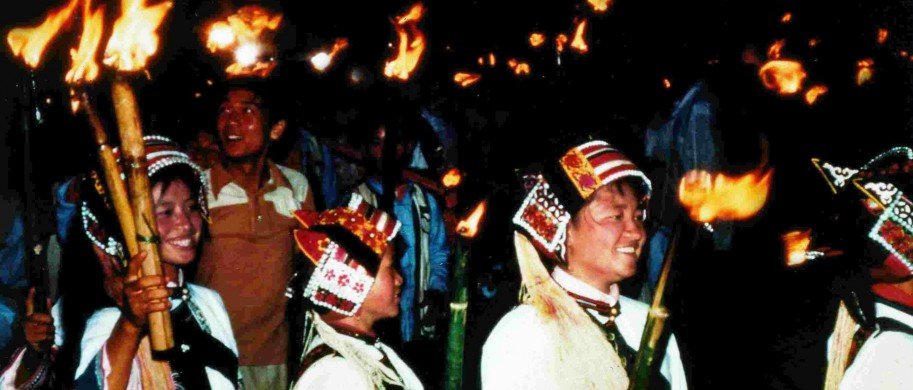
This is an overview of Yunnan's most important festivals. There's a plethora of festivities going on in Yunnan almost all year round due to the various local ethnic minorities with different traditions and culture.
Water-Splashing Festival of Dai
Date: 14th to 16th of April (24th to 26th day of the sixth month of the Dai calendar)
Place: Southern Yunnan Province, Xishuangbanna Prefecture
Activities: Regarded as the New Year of Dai ethnic minority, the Water-Splashing Festival is the traditional occasion for Dai and the most influential festival in Yunnan Province. Before the festival wines are brewed, pigs and chicken are slaughtered and enjoyed with other festival foods also being prepared beforehand. During the three days of the festival, rich and colorful activities are held. Dragon boat racing and other performances such as Peacock dances are held on the first day followed by the characteristic water-splashing event on the second day. The last day is usually for the young people to play games as a way of expressing their love for each other.
Usually held by the banks of the picturesque Lancang River (one of the main rivers of southwest China, in Southeast Asia known as Mekong), girls of Dai ethnic minority dip branches into the river and sprinkle the water onto others as a way to express their best wishes at the beginning of the new year.
The climax of the water-splashing activity is when the people of the different ethnic groups attend the festival and splash water upon each other, using basins and buckets. Although all the people are soaked to the skin, all participants are happy.
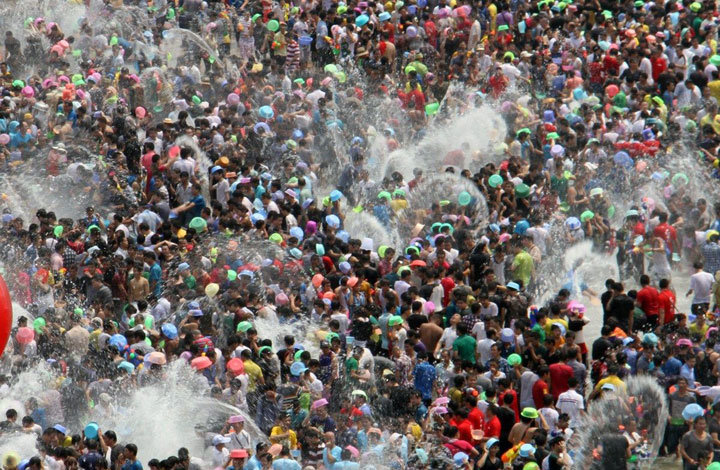
Mid-Autumn Festival
Date: 15th day (full moon) of the 8th month in the Chinese lunar calendar (usually late September or early October).
Place: All over China
Activities: Dating back all the way to moon-worship in the Shang Dynasty 3,000 years ago, Mid-Autumn Festival is a harvest festival that takes places on the 15th day of the 8th month in the Chinese lunar calendar (usually late September or early October). Sometimes called Moon Festival, Mid-Autumn Festival is one of China's biggest holidays, and is next to only Spring Festival in its importance for families to come together and celebrate. As with most Chinese traditions that have passed through many centuries, cultures and locations, Mid-Autumn Festival has a number of legends associated with it. The most widely-held legend is that of Chang'e and Houyi.
The details of the legend differ, but generally always contain the idea that Chang'e was a beautiful girl in love with an accomplished archer named Houyi. Through varying circumstance Chang'e gets her hands on a pill of immortality which causes her to float to the moon. Houyi, sometimes good and sometimes bad in the tales, eventually resides on the sun, which comes to represent the yin (male/hot/sun) and yang (female/cool/moon) principles that reside deep in Chinese culture. Read more about the crazy adventures of Chang'e and Houyi, particularly if you like stories that contain giant sun birds that burn the earth and jade rabbits concocting TCM potions on the moon.
The two most traditional foods to eat during Mid-Autumn Festival are mooncakes and pomelos. Mooncakes are usually small dense biscuits which are often filled with meat or sweet bean paste. Yunnan mooncakes are usually filled with ham and sugar, much more suitable for western taste. Mooncakes are often given in large elaborate boxes as gifts at this time of year. The most important aspect of Mid-Autumn Festival though is simply getting together with family and eating a large meal. With its connections to the autumn harvest, it is very similar in this regard to North American Thanksgiving holidays.
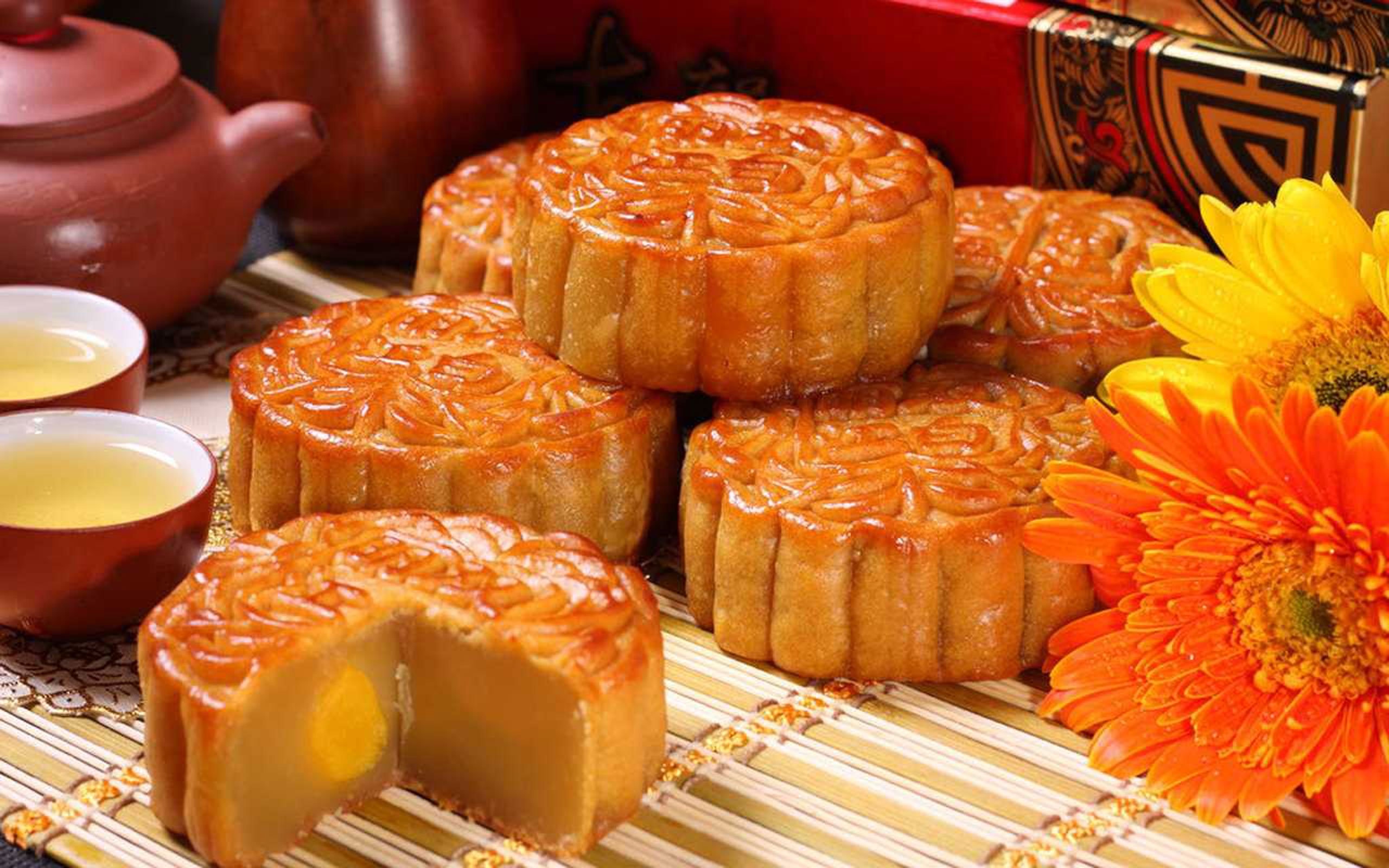
Torch Festival of the Yi Minority
Date: 24th to 26th day of the sixth lunar month
Place: All over Yunnan, especially where Yi Minorities live
Activities: Recognized as the grandest traditional festival of the Yi ethnic minority, the Torch Festival is full of rich and colorful activities. Worshiping ancestors, visiting relatives and friends to convey their best wishes are the main events of the first day. Bull and sheep fighting, horse racing, cockfighting, singing competition, beauty contest, wrestling and tug-of-wars etc. are held on the second day allowing everyone to compete and play to their heart content.
The climax comes in the evening of the third day, large bonfires are lit while people sit, sing, and dance around them the whole night. In the eyes of the Yi, the torch symbolizes happiness and chasteness and brings good luck to the people. Because the festival is of such a frantic and ardent atmosphere, people from other countries refer to it as 'the Carnival with Chinese Characteristics'.
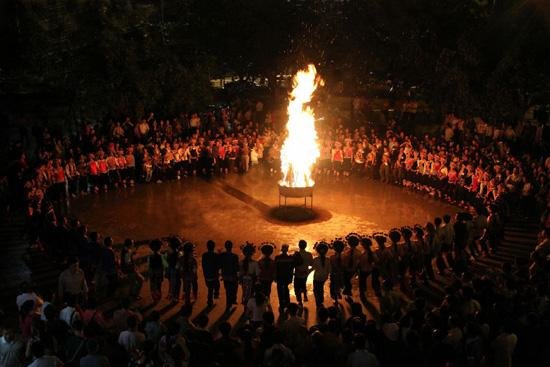
The Third Moon Fair Of Dali (also known as The March Fair of Bai)
Date: 15.-21. day of the 3 lunar month, usually in March or April
Place: Yunnan Province (Bai areas, close to Dali)
Activities: The third Month Fair Festival, which originates from Tang Dynasty 1,300 years ago, is a traditional festival of the Bai people in Dali Bai Autonomous Prefecture. The festival has attracted a lot of tourists in recent years. It is both, the most prosperous trade market in Yunnan's west and a grand festival for Dali people to communicate folk literature and arts. The traditional commodities traded at the fair are horses, mules, tea and medicine. Nowadays, both, the trading place and the commodities have changed a lot. In addition to the exchange of commodities, horse races can be visited, performance of operas as well as folk singing and dancing. The fair (or festival) takes place at the foot of the Diancang Shan, which is west of Dali's ancient town.
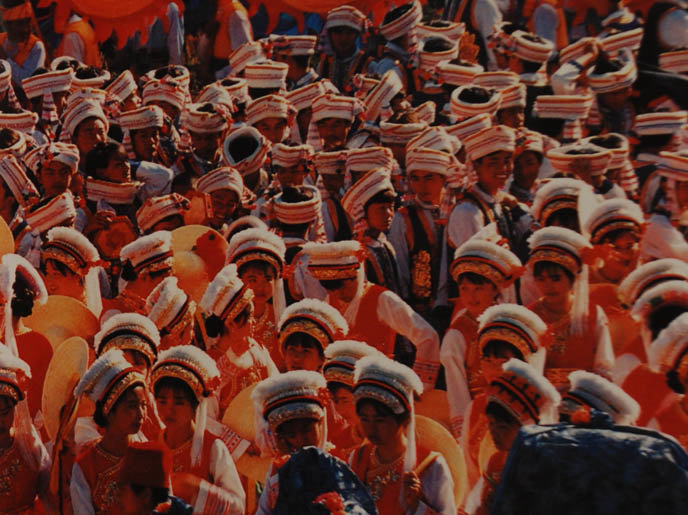
Knife-Pole Festival of Lisu
Date: 2nd day of the second lunar month, usually in March.
Place: Yunnan Province
Activities: As a traditional festival of Lisu ethnic minority, the Knife-Pole Festival expresses good wishes to everyone of the Lisu. A phrase describing bravery in China goes like this: Climbing the Knife Mountain and diving into the Fire Sea and the Knife-Pole Festival is a vivid depiction of this. On the eve of the festival, a grand bonfire is set alight with people dancing around it, later, some of the bolder men leap in the fire, extinguishing it barefooted. It is widely believed that through this act all manner of disasters will be averted.
In the middle of the 2nd day of the second lunar month, the other activity, which represents 'climbing the Knife Mountain' is the highlight of the festival and attracts numerous spectators. 20-meter-high poles, each affixed with 72 razor sharp knives are erected. After drinking a cup of wine, the warriors begin to ascend the pole via the sharpened blades. Upon reaching to the top, they are rewarded with impassioned applauses, whilst they light firecrackers and throw small red flags to the crowds, showering good luck upon everyone. The remainder of the day is for the young, throwing pouches to each other to show love. Nowadays, climbing poles via knives as rungs is recognized as the traditional sport of the Lisu people.
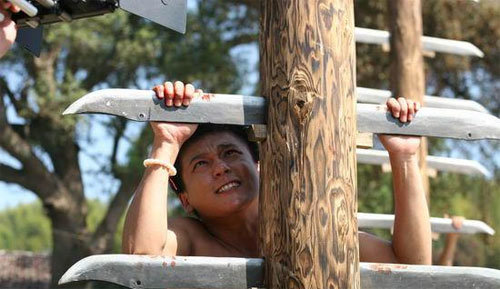
Bullfight Festival of Miao
Date: 25th day of the first lunar month
Place: Guizhou and Yunnan Provinces
Activities: The people of the Miao ethnic minority celebrate numerous festivals all year round but the largest one is their Bullfight Festival which takes place in many Miao villages all over Guizhou and Yunnan. The bull ring is a huge grassplot or meadow. Surrounded by the dressed-up and cheering audience about 10 bulls start fighting eachoter. It will be clear quickly which of the bulls are defeated. When the rival escapes from the bullring and disappears in the crowd the winning bull will get back and look for a new one. As soon as all losers vanish from the ring, there will be a new battle among the winners. This goes on until only the two strongest bulls are left in the ring. This is the final duel and greatest highlight of the festival. As the bulls are equal in power, the fights get more balanced but also more furious. The final can last for several hours as it is not only the question of power but also the contest of skill and strategy. After the last opposite is defeated the final winner is being shown around by its owner. Flowers, red eggs and sachets decorate the bull's horns while the audience feed it with food being the bull's reward. After the fights are over a big fire is lit in the bullring. Men are playing the Lusheng, a homemade mouth organ with pipes made out of reed, and women dance to the music. By holding the Bull Festival, Miao hope for a favorable harvest in the coming year and good health.
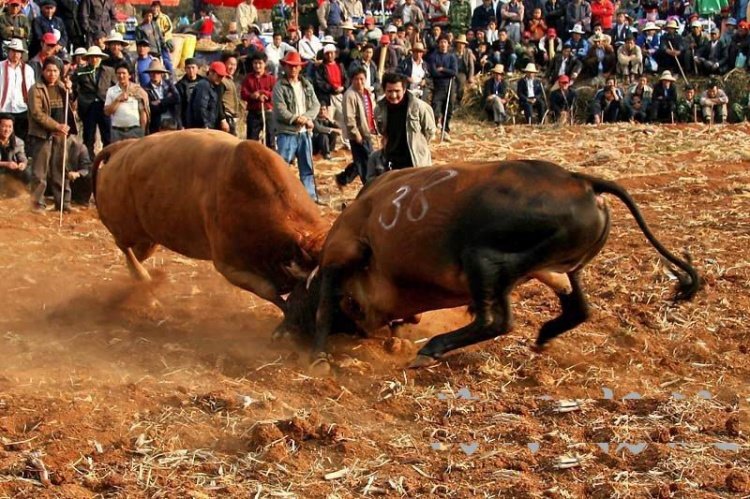
Adult Ceremony of Jino
Date: 15th birthday for girls and 16th for boys
Place: Southern Yunnan Province (mainly Xishuangbanna)
Activities: At 15 (girls) and 16 (boys) years old, Jino youth attend the Adult Ceremony. Parents give their children the clothes, decorations and tools of an adult; girls change their hair to adult style; seniors lead people in singing the epics and discuss ethics and the hardships of labor. From then on, they undertake the same obligations as their parents and can get married.
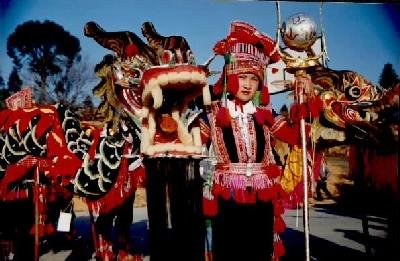
Other Festivals in China
Other great festivals in China include the Mongolian Nadam Festival in Inner Mongolia (China's north), the end of Ramadan and the Corban Festival in provinces where islamic ethnices live (e.g. Ningxia Hui Autonomous Region, Xinjiang and Gansu Provinces). Further festivals are listed below:
- 族灯节 Tibetan Lantern Festival
- 目脑(景颇族歌舞节) Munao Song and Dance Festival
- 云南僳僳族刀杆节 Sword-Ladder Festival
- 彝族二月八节 The Eighth Day of the Second Month Festival
- 苗族芦笙节 Reed Piper /Flute Festival
- 壮族花王节 Flower Lady Day
- 侗族花炮节 Firecrackers Festival of the Dong's
- 壮族三月歌墟(歌婆节) The Third-Month Songfest/The Singing Carnival
- 仡佬族牛王节 Ox King Festival
- 龙胜瑶族六月晒衣节 Sixth-Month “Drying Clothes” Festival
- 雪顿节(藏戏节) Sholdon(Tibetan Opera)Festival
- 西藏望果节 Fruit-Awaiting Festival
- 西藏洗澡节 Bathing Festival
- 壮族盘王节The Panwang Festival
- 壮族灶王节 The Kitchen God Festival
- 壮族糍粑节 Rice Paste Festival
- 壮族寒衣节 Winter Clothing Festival
- 佛教地藏节 The Field Hides Festival
- 腊八节 Laba Rice Porridge Festival
- 苗族姊妹节(姑娘节) Sisters Festival
- 1029 reads
